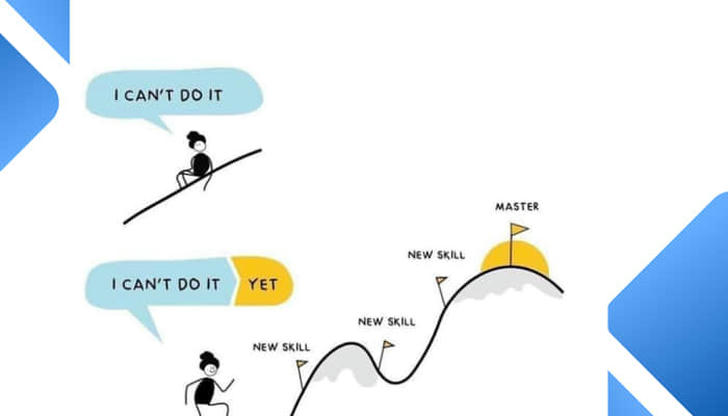How to Build a Resilient Brain for Overcoming Obstacles

When you face rejection, it’s resilience that lifts you up. Life can throw challenges your way, but your inner strength helps you keep going, whether it's getting out of bed or finding your seat in a dark theater. Achieving success and happiness takes effort and determination.
Success and happiness can look different for everyone; success might be about achieving career goals, while happiness often comes from meaningful relationships. Central to both is the ability to rely on your resilience, which is essential for overcoming obstacles and thriving. Building resilience empowers you to take risks, knowing you'll be okay regardless of the outcome. While developing this skill isn’t easy, it’s definitely attainable.
Improving resilience requires more than just wishing for it; you need to take intentional actions. Some strategies might seem simple, but they lay the foundation for true resilience, which ultimately comes from within.
"Not Yet" vs. "I Can’t"

When you think about it, there’s a big difference between saying "not yet" and "I can’t." The first phrase suggests possibilities, while the second sounds final. To build resilience, it’s better to adopt a "not yet" mindset.
For instance, if you’re turned down for a job, the rejection might feel harsh, no matter how nicely it’s worded. The message is clear: "I can’t give you the job." But just because you didn't get that position doesn’t mean you're not qualified or valuable. It simply wasn’t the right opportunity for you at that moment.Instead of falling into the trap of "I can’t," try to see it as "not yet." This mindset helps you recognize that setbacks are not a reflection of your worth, but rather a chance for growth.
In short, resilience is about picking yourself up after disappointment, learning from it, and trying again. It means understanding that failure can lead to valuable insights.
Focus on Effort and Progress, Not Perfection

Building resilience takes time. As you face challenges, you learn how to handle difficult situations and keep moving forward. This growth happens through both successes and failures. Remember, not everything you do has to be perfect.
Perfectionists often struggle to complete tasks because they keep refining and adjusting their work. Dr. Brené Brown points out that "perfectionism is not the same as striving to do your best. It’s a shield." While aiming for perfection may seem like a good thing, it can actually hold you back, keeping you from facing disappointments.
To illustrate, imagine two people starting blogs. Writer 1 focuses on writing regularly and learning from their mistakes. Writer 2, however, spends so much time perfecting their first post that they don’t publish anything. While both want to write well, Writer 1’s willingness to move forward allows them to improve and grow their blog. In contrast, Writer 2’s hesitation makes it harder to develop their skills.
By prioritizing effort and progress over perfection, you can cultivate resilience and keep moving toward your goals.
Embrace Challenges as Opportunities for Growth

Remember a time when achieving your current goals felt impossible? The toughest challenges often shape who we are, whether it’s moving to a new city, making new friends, or committing to self-improvement. Without these challenges, we miss out on growth, and without growth, we can’t build resilience.
So, what does it mean to challenge yourself? Anytime you step outside your comfort zone, you’re facing a challenge. This can range from significant life changes to smaller goals like quitting smoking or taking a daily walk. Each challenge is a chance to learn more about yourself: How do you feel when you push your limits? How does your body and mind react? Understanding your responses is crucial for developing resilience and thriving in life.
Strengthening Your Brain’s Resilience

While it’s easy to talk about embracing challenges and avoiding perfectionism, knowing how to take concrete steps toward self-improvement can be harder. Here are some practical tips to help build resilience:
1.Practice Stress Management Techniques: Techniques like deep breathing and mindfulness meditation can be valuable tools for managing stress and anxiety. Knowing you have these strategies at your disposal boosts your confidence in handling disappointments.
2.Engage in Regular Physical Exercise: The benefits of physical activity for both body and mind are well-documented. Staying active not only improves your mood but also helps you feel more confident, which in turn enhances your resilience.
3.Stimulate Your Brain with Cognitive Activities: Keeping your mind sharp is essential for resilience. Engage in activities like puzzles, reading, or learning a new language to keep your brain active and agile.
Although these steps may seem straightforward, creating a specific action plan will help you track your progress. Think of these tips as the foundation for your resilience, preparing you for when you face tougher challenges ahead.
Building Resilience Is Possible for Anyone

Recognizing that you need to improve is a sign of resilience in itself. Acknowledging this need is an important first step, and you should be proud of it. This video serves as a helpful starting point. Let’s summarize how to build resilience and overcome obstacles.
First, examine your mindset. Do you lean toward "not yet" or "I can’t"? The "not yet" mindset is open to growth, believing you can improve and achieve your goals in the future.
Next, focus on effort rather than perfection. Resilience flourishes with progress, so accept your best effort, regardless of how you feel. Every step forward counts. Additionally, embracing new challenges—whether small, like trying a new exercise, or significant, like moving to a new home or quitting smoking—is essential for building resilience.
Remember, resilience takes time and experience to develop. Stay committed and keep learning about yourself along the way.
